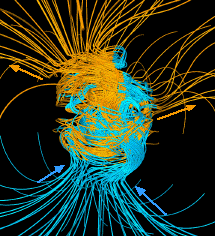This picture is from a model of how the earth's magnetic field is generated.
Click on image for full size
Glaztmeir and Roberts of LANL
The Generation of Neptune's Magnetosphere
Magnetospheres are generated with magnetic materials and motions within the magnetic material. Scientists believe that as long as a planet or star has these two ingredients it can generate a magnetic field.
The terrestrial planets generate magnetospheres within the iron cores at their centers. However, Neptune has almost no iron core.
The magnetic material of Neptune is found within its icy shell. Motions within that shell produce Neptune's medium sized magnetosphere.
You might also be interested in:
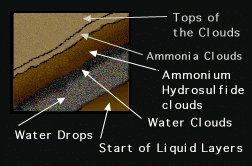
There is no surface to the giant planets, only a gradual transition from the atmosphere, as depicted in this drawing. Therefore the giant planets do not have strict layers, as the terrestrial planets do.
...more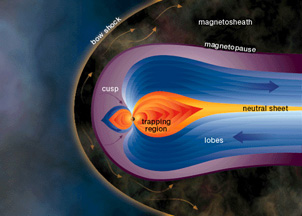
A magnetometer is an instrument for measuring magnetic fields. Many spacecraft carry magnetometers to measure the magnetic fields around planets they orbit or fly by. When a spacecraft takes such measurements,
...more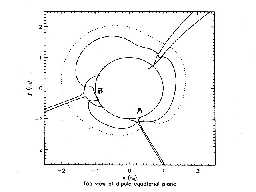
Neptune has three tiny plasmaspheres. The rings of Neptune sweep away much of the particles in the area. Particles enter the plasmasphere from the atmosphere as well as the magnetotail. Mathematical theory
...more
One of the many cloud patterns of Neptune is the "scooter" which was discovered by Voyager in 1989. In this image, the Great Dark Spot is found in the upper left of the image, and just below the Spot is
...more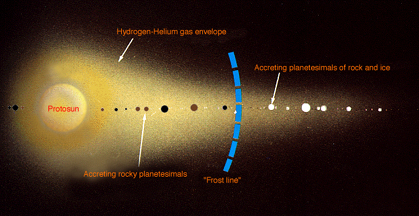
The position of the planets in the solar nebula greatly affected their 1. size and 2. composition. This is because of the effect of how cold it was in the nebula. 1. The nebula was a lot warmer close to
...more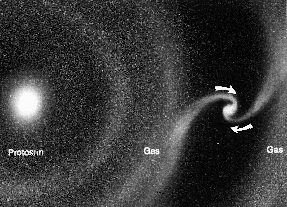
As shown in this picture, while they were forming in the solar nebula, the nuclei of the protoplanets drew material to themselves from the cloud of gas and dust around them. The bigger a protoplanets was
...more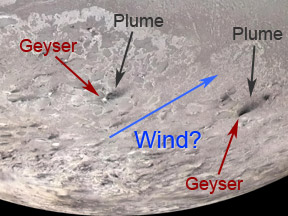
Triton, by far the largest moon of Neptune, is slightly smaller than Earth's Moon. Triton has the coldest surface temperatures in our Solar System. Surprisingly, this frigid moon has an atmosphere, albeit
...more


